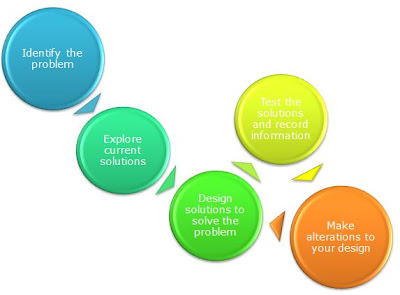Of course we have to start with the basics of what the two processes look like, then get into the nitty gritty of how to implement them in a classroom.
The process of Investigating Scientifically is as follows;
In part from the NSW Department of
Education and Training 2005
This is the basis from which all science invesigations should be developed. Of course the level of complexity to which you teach it will be based on your grade level. For example I wouldn't teach a kindergarten student to write a hypothesis, but I certainly would ask them to make predictions and try to justify those to me. Any way we can encourage our students to think independently is great training for them.
When teaching science practically we are generally either teaching students to investigate scientifically or to design and make.
The Design And Make process is as follows.
This really gives students an opportunity to let their creative juices flow. Even from kindergarten they can be learning to identify an issue, create solutions for it, evaluate those solutions then make changes to their original ideas.
In the coming blogs I will be discussing how to create proformas for students to use in their science work when completing these processes and take a closer look at the meat and bones of a scientific investigation. We will look at 'fair testing', writing hypothesis and predictions and how students can collect information from which to base their results.





No comments:
Post a Comment